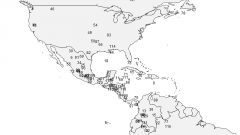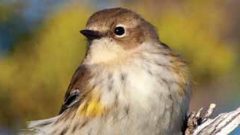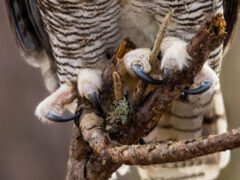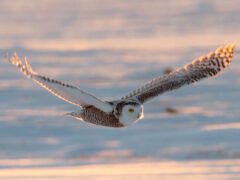The Four Keys to ID
- Size & Shape
A stocky, barrel-chested flycatcher, with a large head and a heavy, long bill for its size. It has rather long wings that can make the tail look short.
Relative Size
Larger than a Western Wood-Pewee, smaller than a Western Kingbird.

 between sparrow and robin
between sparrow and robinMeasurements
- Both Sexes
- Length: 7.1-7.9 in (18-20 cm)
- Weight: 1.0-1.4 oz (28-40.4 g)
- Wingspan: 12.4-13.6 in (31.5-34.5 cm)
© County Lister Brendan / Macaulay Library
- Color Pattern
Sooty gray-brown above (with olive tones only in optimal light and fresh plumage), paler below. The dark gray sides of the breast contrast with white in the center, making it look as if the bird is wearing a vest. From the rear, large white tufts at the sides of the back are sometimes visible.
© Luke Seitz / Macaulay Library - Behavior
Olive-sided Flycatchers spend much of their time perched high in trees, watching for large flying insects. They catch these insects by sallying—flying out in quick pursuit, seizing the prey in its bill, and returning to the same perch.
- Habitat
Breeds mostly in northern and montane coniferous forest from sea level to timberline and the edge of the tundra. They are most numerous in mid- and higher-elevation forest in mountains (3,000–7,000 feet elevation) and around burned or boggy areas with numerous openings and dead trees. Migrants and wintering birds also favor gaps in coniferous forest.
© Mike V.A. Burrell / Macaulay Library
Regional Differences
A subspecies known as majorinus breeds in southern California and northern Baja California. These individuals have longer wings and tails than Olive-sided Flycatchers in the rest of the range.




































